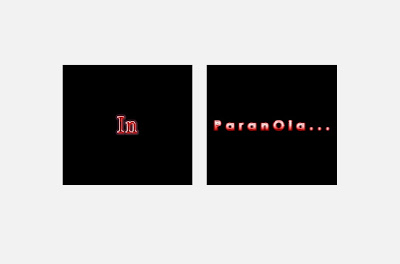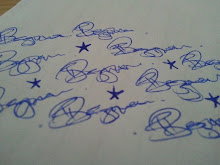In that ways does your media product use, develop or challenge forms and conventions of real media products?
My production was filmed during late evening where the only source of light was the street lamps which created the conventional thriller genre atmosphere of a creepy dark street/alleyway. The diegetic sounds are of the actress breathing heavily; this gives clues as to her emotions at that moment. Also, thrillers and horrors emphasise on how the actors breathe, this gives a lot away of how they’re feeling.
My media product follows the conventions of thriller films by building up the suspense in their trailers without revealing the plot of the film. This keeps the viewers engrossed for the two minutes, making them want to watch the rest of the film to unravel the storyline.
My thriller film challenges conventions through its use of non-diegetic music. Unlike the use of quiet, eerie music, my production uses loud music as the titles are typed in. while there is action on screen, there in no non-diegetic music/sound and when the screen is blank with titles appearing, there is non diegetic music to fill the space.
How does your media product represent particular social groups?
My media product doesn’t strongly represent any particular social grade, however, the surroundings of the quiet street and the fitted kitchen suggest that she is of a middle class family living in a middle class home in a quiet built up area. Also, the main character is a young, Asian female, and her being outdoors during late evening goes against the typical ‘Asian culture’, which again poses questions in the viewers mind as to why is she out so late? Why is no one at home with her? And, it looks as if she lives in a family orientated home, where is everyone else?
The male is represented as the stronger sex (antagonist) and the female as the weaker (victim); naturally as conventionally women are the weaker sex and depend on men to fend for them.
What kind of media institutions might distribute your media product and why?
Film studios such as New Line Cinema (Se7en, Lord Of The Rings and Teenage Mutant Ninja Turtles), Paramount Pictures (The Godfather, The Italian Job, Star Trek and Transformers) and Universal Studios (Jaws, Dracula and Back To The Future) are the big and successful studios. They usually release big budget films that are predicted to rake in millions in profits.
My production would be a small budget film as it’s filmed in the UK
Who would be the audience for your media product?
This film would be targeted towards the middle/working class, male and female it appeals to both genders but it might be slightly inclined towards the male gender as males are more likely to watch thrillers than the small minority of daring females.
My production is a thriller which is supposed to create suspense and leave the audience confused; it would have to be a PG film because of hypothetical scenes such as physical fighting and obscene language.
How did you attract/address your audience?
I attracted my audience by showing only glimpses of scenes of what would’ve been my film. The production follows the typical thriller conventions by creating suspense so the audience want to keep watching.
In terms of marketing and advertising, the internet would play a major part. A website would be dedicated to the film, where a short summary of the film would be available. Also, people’s reviews of the trailer so far, character profiles, film trailers, premier dates and release date would be available. Pop up’s on popular sites such as MSN and Yahoo are also good methods to advertise the film as millions of people access theses sites everyday and so they’ll be aware of the film
The usual billboards and posters would be put up around cities to attract more people to watch the movie as majority of people use public transport/their own transport daily to get to school/college/work etc.
As this film is a small budget film, it wouldn’t be advertised on TV; however radio and YouTube would have interviews to keep people up to date with the film.
What have you learnt about technologies from the process of constructing this product?
From the process of constructing this media production, I have firstly learnt to use mini DV cameras. Before joining this course, I didn’t know how to work a mini DV tape, and now I’m able to insert a tape, zoom, record on it using zooming, pausing, fading out etc, rewind and watch through what I’ve recorded, forward and carry on shooting.
Secondly, as I already blog for leisure, I didn’t find blogging a new experience, however, setting the layout using a CSS code was new to me and I enjoyed browsing through different layouts and seeing how the outcomes were.
Working on Apple Macs was an entirely new experience for me as I had never operated Apple Macs before. I’ve learnt how to use the video editing software ‘Final Cut Pro’, I now know how to cut and paste scenes, add transition effects and include text for titles. Overall, I found working on Final Cut Pro challenging and not so straightforward to my liking.
Looking back at your preliminary task, what do you feel you have learnt in the progression from it to the full product?
Firstly, the preliminary take taught me how to use the camera on the scenes. If it wasn’t for the preliminary task, I wouldn’t have known how to handle a camera safely yet creatively.
Looking back at the match on action and 180 degree rule, I’ve learnt and understood why directors and camera people do not break these rules. While filming my own production, I applied that knowledge and that gave me a better understanding of match on action and the 180 degree rule.
When filming, I broke the 180 degree rule in the kitchen scene, when I watched through it; I saw where I went wrong and re-shot the scene.
The preliminary task helped me progress as a director of my own movie and a camera person.


















